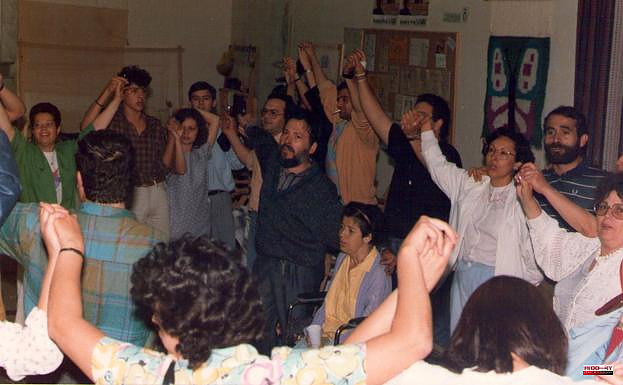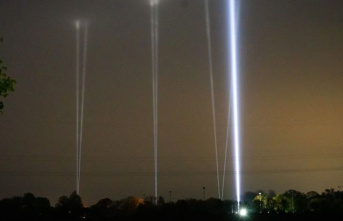The 50th anniversary marks the founding of the La Palmera neighborhood association. It was the first Almeria neighborhood association. These types of organizations were established in response to the challenges posed by Almeria's massive urbanization.
Rafael Quirosa Quirosa-Cheyrouze is a Professor of Contemporary History at University of Almeria. He has been a specialist on the History of Spain and gave a conference where he described the history of the neighborhood movement during those years of dictatorship. The event was held in Unicaja's cultural space. It was sponsored by La Palmera neighborhood association, and Ana Maria Garcia Colomera introduced it. This association was founded in 1972 in Los Angeles and is based in Unicaja. It has created infrastructure such as roads, parks, gardens and nurseries even during dictatorship.
Rafael Quirosa, a researcher, contributed a scientific perspective to the story of the members. He was a part of the neighborhood movement phenomenon and worked with historians like Emilia Martos Contreras and Monica Fernandez Amador to help those who were there to gain insight into this "very relevant" movement. He stressed the importance of chronology in understanding this type historical process. This must be done "through the combination narrative and documentation." This type of neighborhood group was protected by the 1964 General Law of Associations. It allowed residents to gather and discuss issues that were affecting their newly created neighborhoods.
Protests and demonstrations will follow the filing of complaints against Francoist Administration. Participants at the event spoke out about their experiences fleeing the police and the time they spent in prison. "All these repressive measures had an opposite effect: they strengthened the commitment of those who were retaliating for the fight for democracy. This law, which was an "attempt” to adapt to new times, sowed the seeds that would produce "a new political classes" out of these neighborhood associations. Quirosa-Cheyrouze stated that the Francoist administration was an expert at adapting to changing international circumstances and believed that the new groups created by the law would not challenge the fundamental pillars. She said, "In these spaces a political awareness grew" and that they felt the need to combat a system that forced them to be silent for too long.
Professor at the university distinguishes between two phases in the neighborhood movement. The ecclesiastical section is responsible for the initial stage, which takes place between the end of dictator's life, and the beginning of the transition. Many of these associations' first headquarters would be the parish, where Franco's priest provided a safe space. He stressed the importance of seperating Francoism and Catholicism "especially after" the Second Vatican Council. From the 1960s to 1973, rapid urban growth in cities like Madrid and Barcelona (also Almeria) was the catalyst for the neighborhood movement. He stressed that the "deficits suffered by the neighborhood which emerged on the outskirts" of localities forced people into a united effort to solve these problems.
La Palmera was a strong advocate for the constary in urban issues. Rafael Quirosa said, "There was always something to do." Almeria's daily life was characterized by streets without asphalt, long walks to school for children, poor lighting, and trash everywhere. Los Angeles was one of the poorest neighborhoods. Second-class residents lived in Almeria. The professor points out that despite the distance between these neighborhoods, and the city's center, it was thought that visiting the city meant that you were actually going there. He considered the city to be an independent space, separate from the surrounding neighborhoods.
The struggle of neighbors to close the loopholes in Franco’s legislation is the second stage. This has already taken place in democratic times. He said that they were fighting against municipalities that were placed by the civil government, even though Suarez was already in government. The movement will see a decline with many members of the neighborhood association in politics. This is due to the appearance of many groups that have diluted the original spirit. Neighborhood associations were closely involved in the social transformations that the Spanish experienced during the years of Transition.
Rafael Quirosa emphasizes the vital role of women in community activism. The historian says that women were often singled out by their spouses for moving out of their homes on numerous occasions. He explained that caring for children and helping with housework seemed incompatible to the possibility of becoming involved in issues that affect daily life in the community. Many of them were open to breaking with prejudices and took to the streets to improve the quality and life of others. Many of them became directors of these associations.












